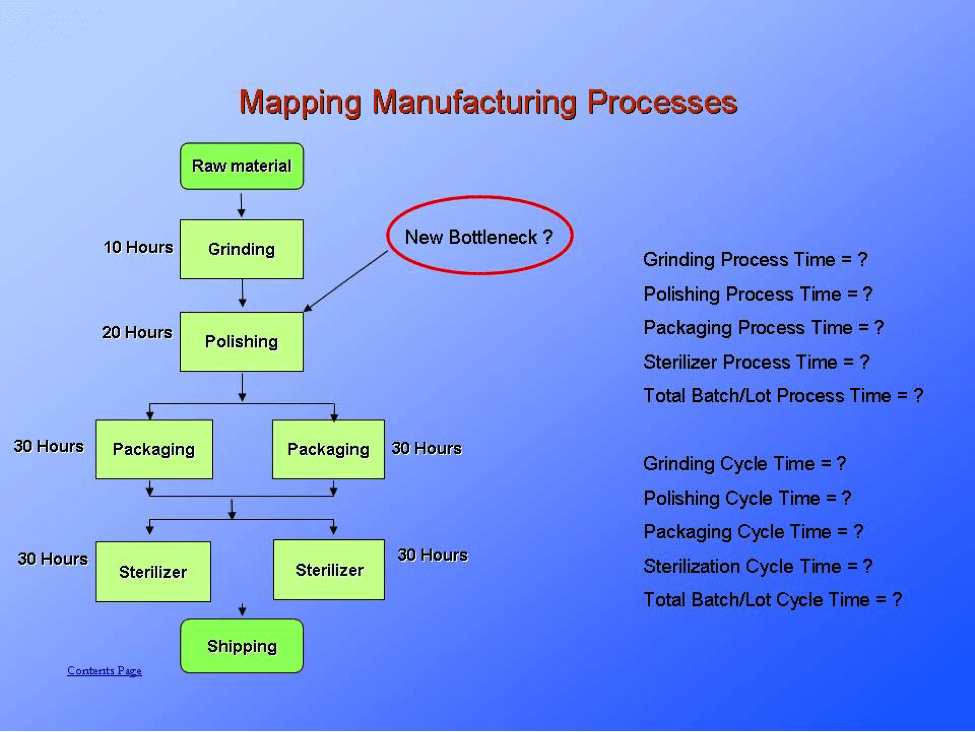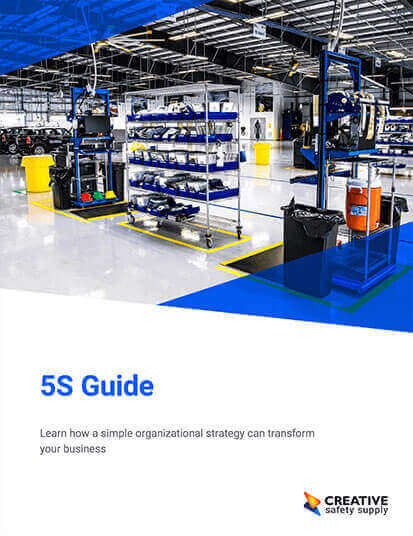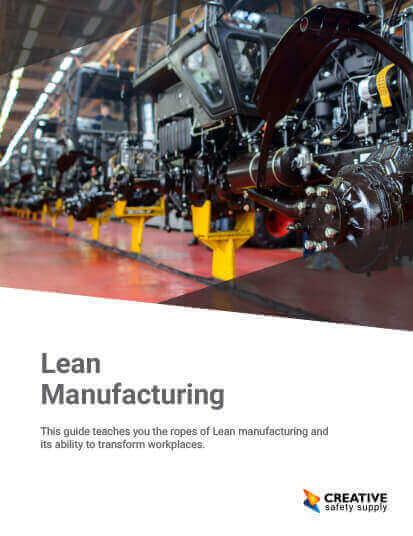
- What Is A Bottleneck?
- Bottleneck Diagram:
- Bottleneck Analysis:
- What Impact Are Caused By Bottlenecks?
- Causes of Bottleneck
- What Are The Major Bottlenecks In Production Processes?
- Performing a Bottleneck Analysis
- Benefits of a Bottleneck Analysis
- Short-term vs Long-term Bottlenecks
- Dealing with Bottlenecks: Examples of Solutions
- Training Teams to Watch for Bottlenecks
What Is A Bottleneck?
A bottleneck refers to a situation or point in a process where things are not progressing or have come to a halt. The term bottleneck is commonly used in manufacturing, business, and various industries to refer to a situation that causes a delay in the workflow.
The meaning of a bottleneck can vary depending on the industry and the context it is used. For instance, the meaning of bottleneck in business refers to the halt or delay in a specific process in the production system which prevents the workflow from operating smoothly. For example, a bottleneck in business can be the lack of raw materials that prevents the production of finished goods.
Refer to the following table for the meaning of bottleneck in various industries.
Industry | Bottleneck Meaning | Example |
Operations Management | A bottleneck in operations management refers to the point in business procedures that is experiencing a delay or has broken down completely. | A common bottleneck example in business would be the approval or assignment of a task on which other tasks are dependent. |
Marketing | Marketing bottlenecks are the lack of content produced by marketing agencies or the inability to meet customer demands. | Insufficient marketing strategies that fail to reach the customers. |
Manufacturing | A bottleneck in manufacturing refers to a point in production that is undergoing a delay or obstacle that prevents the normal flow of production. | Lack of resources is a common bottleneck in manufacturing factories. |
Biology | A bottleneck in biology refers to an event or occurrence that drastically reduces the size of the population. | Tsunamis, earthquakes, and natural disasters are common examples of bottlenecks |
Bottleneck Diagram:
A bottleneck analysis diagram is a flow chart dictating how much time is required by each process. This refers to the time consumed by each process to flow into each other and the delay in time if a bottleneck occurs.

Bottleneck Analysis:
Bottleneck Analysis can be defined as a structured problem-solving process that aims to identify and address potential weak points that cause a delay in the business processes. The goal of a bottleneck analysis is to improve efficiency and productivity in the workplace which causes delays or prevents the value stream from progressing as designed.
Lean thinkers conduct bottleneck analysis as a lean management tool that analyzes weak links that prevent the workflow from undergoing completion. A bottleneck analysis can help managers assess the exact point along the workflow that is causing disruption and apply solutions to eliminate them.
What Impact Are Caused By Bottlenecks?
Bottlenecks in manufacturing can cause adverse side effects which can deviate from the standard procedures in the value stream.
Major Impacts Caused By Bottlenecks Include:
- The quality of the final products becomes compromised.
- There is low productivity of the employees until the bottleneck isn't solved.
- Customer satisfaction is at risk due to delayed deliveries
- Low Predictability of Workflow, until the bottleneck is resolved
- Inventory shelf life increases until the bottleneck is resolved
- Insufficient planning which hinders the morale of the employees
Causes of Bottleneck
Bottlenecks during the manufacturing process can arise from multiple factors that can impede or stall the smooth workflow of producing value products. Here are some of the most common causes:
Unclear Processes:
Having waste processes or outdated equipment eventually causes a delay in the manufacturing process. It’s important to evaluate why each process is present in the manufacturing process its relevance and what it will help achieve in the long run. Managers or leaders should assess the processes along the value stream to address potential delays and apply a proactive approach to resolve them.
Insufficient Supplies:
If the inventory lacks raw materials, it can potentially lead to a delay in the manufacturing of goods. Managers should check the items essential to begin the manufacturing process, as failure to keep up with the demand for products could result. By doing so, you are ultimately risking the reputation of your company or business, which may cause your customers to lose their loyalty.
Manual data processing:
If your manufacturing company has an outdated manual data processing system, it might prove inefficient in the long run. A manual method of recording data can introduce issues like errors or duplicated data. This not only allows the possibility of mistakes but also creates potential risks like fraud, over or underpayments, and customer information errors in your system.
Switching to automated data processing allows you to track shelf life, address potential issues, and align your product manufacturing processes accordingly.
What Are The Major Bottlenecks In Production Processes?
The appearance of a bottleneck occurs due to a variety of causes, as previously mentioned. To avoid delays or problems in the production process, it’s important to keep a keen eye on the workflow.
Raw Material Management:
The basic essential materials that are required to begin the production process are a crucial aspect of manufacturing. Bottlenecks in the form of delayed supplies or insufficient resources affect the entire production chain.
Inventory Controls:
Managers should continuously regulate and update their inventory regularly to ensure smooth production flow. Switching to automated data processing can help alert if resources from the inventory are being drained.
Monitoring production:
Once the production process begins, leaders must keep a close eye to identify potential bottlenecks that may arise during the process. This is done to develop a proactive approach to help deduce the cause of bottlenecks and eliminate them at the right time.
Equipment Failure:
Equipment failure causes delays and harms workers in the process. That’s why it's important to continuously monitor mechanical equipment and keep them working efficiently.
Performing a Bottleneck Analysis

Specifically used to identify the cause of a bottleneck, or to identify where a bottleneck is likely to occur in the future, bottleneck analyses are an essential tool for all businesses that work with sequential steps to complete a product or service. In the end, no matter what the reason was for conducting this analysis, its completion will provide important information about how a product moves through the production process, and how processes can be improved.
Gathering Information
Performing a bottleneck analysis is a detailed operation that begins with the company gathering as much information as possible about the manufacturing flow of a particular product or process.
When performing a bottleneck analysis, it is important to look at both the specific step where the bottleneck is occurring as well as the entire manufacturing process. Looking at the entire process will provide essential information about the steps leading up to the bottleneck, the bottleneck itself, and what takes place directly after the bottleneck. It is also necessary to note that if a bottleneck early in the production process is eliminated, that action may result in a new one forming further down the line.
A properly performed analysis will not only help to find solutions to the existing bottleneck, but it will also help to prevent new ones from forming.
Using Lean Manufacturing Tools
Some bottlenecks can be identified and resolved quickly and without any need for extensive analysis. In most cases, the tools used for this process are going to be either a written flowchart or a computer program.
Bottlenecks can easily be detected if the business utilizes the Kanban method. By implementing this technique, visualizing the flow of work on a Kanban board or within a software program allows employees to see where tasks are piling up within a production process or within a supply chain.
Other bottleneck analysis tools available to use include the DMAIC method and the Theory of Constraints method. These are only some of the tools that can be used in an analysis but finding the right one is important for maximizing positive results. For a simple situation, using a template can be an effective choice.
Benefits of a Bottleneck Analysis
In addition to eliminating the bottleneck at its source and achieving a steadier workflow, a facility can enjoy the following additional advantages:
- Waste elimination – Bottlenecks are often caused by unnecessary or inefficient processes, which can result in a variety of types of waste. Being aware of any waste is the first step in making improvements to the existing processes.
- Increased knowledge - The more a company knows about a specific process, the easier it is to make smart decisions and take control of the throughput capacity. Knowledge provides advantages not only when it comes to eliminating bottlenecks, but also when making large process improvement decisions in general.
The productivity of a facility depends on how much value it can produce for its clients. As waste becomes more rare and the knowledge base of the workers increases, they then become able to produce consistent and highly-valuable materials.
Short-term vs Long-term Bottlenecks
Aside from the different causes of bottlenecks identified above, there are also two different classifications that bottlenecks fit into. Those are:
- Short-term bottlenecks – These types of bottlenecks are caused by short-term problems. For example, a bottleneck can occur if an employee is out sick for the day or if a delivery is running late. These usually aren’t cause for concern, although you may do well to have a backup plan if something like this does occur.
- Long-term bottlenecks – These types of bottlenecks are more cause for concern. Long-term bottlenecks require management techniques such as root cause analysis or the creation of a fishbone diagram to get to the bottom of the issue. Long-term bottlenecks may come about because of an exhaustive audit procedure, a disorganized inventory system, or even an entire lack of real-time data that identifies issues.
Long-term bottlenecks are the types of bottlenecks that should be investigated immediately to reduce wasteful practices.
Dealing with Bottlenecks: Examples of Solutions
In addition to identifying exactly where a bottleneck forms, bottleneck analyses also aim to identify potential solutions. Every company is going to have its own way of solving this type of problem, but the following are some common options that should be considered whenever looking for ways to eliminate bottlenecks in the workflow.
- Add additional capacity – If a bottleneck is being caused at a specific step in the production process, consider adding additional capacity. For example, bottlenecks can occur during painting tasks because it may take a longer time than other steps. Adding a second painting station will effectively double capacity and should eliminate the bottleneck problem.
- Eliminate wasteful steps – Some products may have extra features that customers don't want or need. If these types of steps are causing a bottleneck, it is a good idea to eliminate them all together to keep work moving along smoothly. Eliminating waste is an important part of fixing bottlenecks and improving efficiency.
- Add staff – One of the most common causes of a bottleneck is insufficient staffing to complete a task. Hiring additional employees to work in a specific area is an excellent solution.
- Reduce production – While reducing the rate of production is not typically a good long-term solution, it is better to reduce production rates than to have huge amounts of inventory building up along the production line.
Brainstorm ways to remedy process constraints when they occur. It will help improve manufacturing operations and help the team keep product demand in check.
Training Teams to Watch for Bottlenecks
Training teams to watch for bottlenecks will typically involve department managers first informing front line employees on what to watch for. Some common recognizable features include the following:
- Trouble keeping up - If one department or step in a workflow process is constantly falling behind and other areas don't have this issue, it is an early sign of a bottleneck problem.
- Short staff - When employees from a specific area call in sick or take a vacation day, does it cause an unreasonable burden to other team members? If so, the staffing or workflow should be evaluated for improvement opportunities.
- Other - In general, listening to the concerns of employees can be one of the best ways to discover potential issues. Employees are typically the first to notice that there are problems and can be an excellent 'alarm' to watch out for future problems.
Anytime issues like these are found, it is a good time to perform a full bottleneck analysis on the process in question. Since the problem isn't a serious issue yet, the company will have some extra time to be able to perform a full analysis without interrupting workflow.
Conclusion:
Overall, the aim of identifying bottlenecks in the production process is to eliminate potential weak links that impact the flow of the rest of the processes. Leaders or managers responsible for overseeing the production processes should be aware of the potential bottlenecks that may arise during the manufacturing process.
Similar Articles
- The Five Whys (Root Cause Analysis)
- Fault Tree Analysis
- Job Safety Analysis
- Kano Model (Analysis & Diagram)
- Value Stream Mapping (VSM Analysis)
- Hazard and Operability (HAZOP Analysis)
- Job Hazard Analysis: Addressing Coronavirus Risk in Your Workplace
- Quality Control in Manufacturing
- Organizational Development Process
- Chaku Chaku

